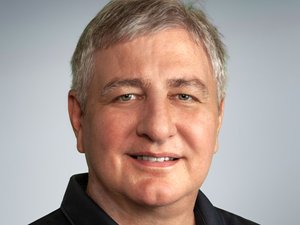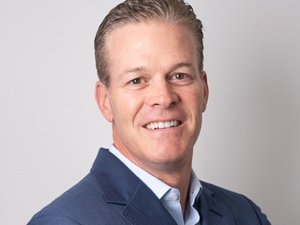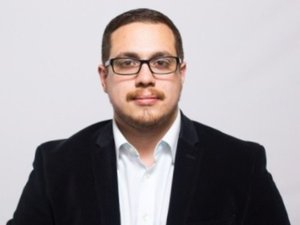When Alix Guerrier was working on his joint MBA and M.A. in Education at Stanford, he didn’t realize just how much the entrepreneurial spirit of surrounding Silicon Valley would influence him.
He knew he'd always be in the education field, whether as a teacher or administrator. But he hardly pictured a future as a co-founder of a major edtech company. Now, a little over a decade later, Guerrier and his co-founder Eric Westendorf have built a nationally recognized company based in D.C.
LearnZillion builds digital curriculums for K-12 teachers, working primarily with public school districts and parents who are homeschooling. And the lesson plans are built by teachers from across the country — or what LearnZillion calls the "Dream Team."
Tell me a little bit about LearnZillion and how you and Eric came about the idea.
We met at business school and connected because we were both coming out of full-time education.
At the time Eric was a principal at E.L. Haynes Public Charter School here in D.C. The basic idea was as a principal, Eric was looking for ways for his teachers to share their expertise. It seemed like video might be a good way. Eric challenged three teachers to capture their expertise in video format. Those three teachers grew to 20, and we brought them together for our first Dream Team that summer.
Seeing these teachers come together was incredible. When you think about it, teachers don’t often get a chance to really work together. This is a hard job with very little support. Simply giving teachers the chance to work collaboratively created amazing results. We saw a powerful, supportive community come together quickly. These teachers brought life, energy and passion into the idea that digital curriculum could be better. It’s because of their work that we’ve been able to influence learning in classrooms nationwide.
When you think about it, teachers don’t often get a chance to really work together.
How did you get involved with the company? And how has it grown since then?
Eric had just started at E.L. Haynes. So he asked me to have coffee and talk about this idea he had, and I thought the idea was great.
In very short order, we had both left our jobs and decided to do this full-time. There was data to show that the videos were effective, and we wanted to make them available to many more teachers and students.
We’ve gone from focusing on these video resources for teachers to understanding the subtle differences in the needs of individual teachers and districts — even states — when it comes to using and creating digital resources. That has expanded what we do, how we do it, and even the way we organize offerings to be more helpful to both teachers and administrators.
When you were studying education, did you ever imagine you’d enter the education technology space?
I knew I would stay in the education sector but not what that meant.
Stanford is probably the influence. It’s a place where you go and you get this sense – even if you hadn’t been thinking about creating a business – that you could do it. I think it planted a latent idea that came out a few years later.
I knew I would stay in the education sector but not what that meant.
You closed a $13 million round last year. Any plans to raise more in the future?
We’re not looking to raise more now. We are focused on building out the tools that we have.
We started out with a small set of instructional videos, and we’ve expanded since then. We have math, more recently English, curricula. We’ve built out resources for additional grades, and we have full lesson plans and assessments. We also partner with districts and states who want to provide quality digital resources and support to their teachers. This is where we want to focus our efforts.
Who are your customers?
Our customers are mostly public school districts that use our full range of services – curricular materials, curriculum management services, professional development and digital assessment.
Our biggest user base is individual teachers and a fair number of parents who gain a new level of understanding into what’s going on in the classroom. But mostly normal teachers in K-12 public schools across the country. About one in three teachers nationwide uses LearnZillion.
When you all launched, what was the response like? What kinds of responses have you all received?
We’re about five years old now, and the response has been great.
We’ve had a lot of success in being able to build a community of teachers that we call our Dream Team. We look for great teachers. It’s about a 4 percent acceptance rate to our Dream Team. So that community now numbers in the several hundreds — actually it might be thousands now. We create our curricula with this group of teachers from around the country — mostly full-time teachers — who work with us during the summer.
More recently, there have been some studies showing the need for the work we’re doing. RAND published a study this year about how frequently teachers are searching for or creating their own materials for their class. And we’re definitely one of the top sources of curricula materials teachers noted using. We are one of the top sources of standards-alignment materials.
This approach we’ve used to build a national team has been replicated now in several states. It’s been amazing to watch what is possible when we bring together these amazing teachers.
Here we think we have the benefit in being rooted in other education organizations. That’s been good for us.
Why have an edtech company in D.C.?
We both live here. We’re parents of DCPS kids, so we have our family ties here in the District. Beyond that, this is an ideal place to work on a company like this.
San Francisco is very techie. There’s an extreme nature in terms of how they think about new companies, and here we think we have the benefit in being rooted in other education organizations. That’s been good for us.
And this is also true across the country, but it also happens to be that we are really close to some innovative school counties here.
It’s not been a decision that we’ve ever second guessed.
What makes innovation in D.C. unique?
I would say that the intensity of the focus on the public sector, so the government, and the role of private organizations towards social goals — there’s an intensity of that here.
The number of people who are working either in the government or with an agency or an elected official or on a national development, the number of people who are doing that, you can’t find that in other places.
We’re explicitly a social enterprise. That kind of talent and that kind of focus is really in focus with how we do our work.
What advice do you have for entrepreneurs?
Learn from your customers. It’s a little bit more than listening to them. You should definitely listen to them.
There’s a lot to be said for learning from your customers. It can be easy to forget that. Focus on learning from your customers.
The question is will you be able to build a team where you are.
Anything else to add? Anything that I might’ve missed?
One primary thing that we didn’t explicitly address is hiring and building a team. We haven’t second guessed our decision to be here. The question is will you be able to build a team where you are.
Our experience is that this has been a good place to find talent and find really amazing people. We’ve grown a little bit nationally, and in a sense, we don’t hire in a location-specific way. The bulk of our team is here, and we’ve been happy with our ability to find folks here.




